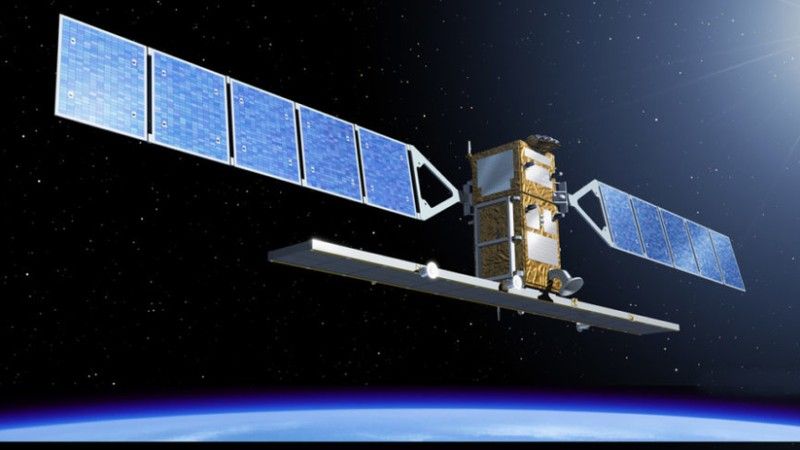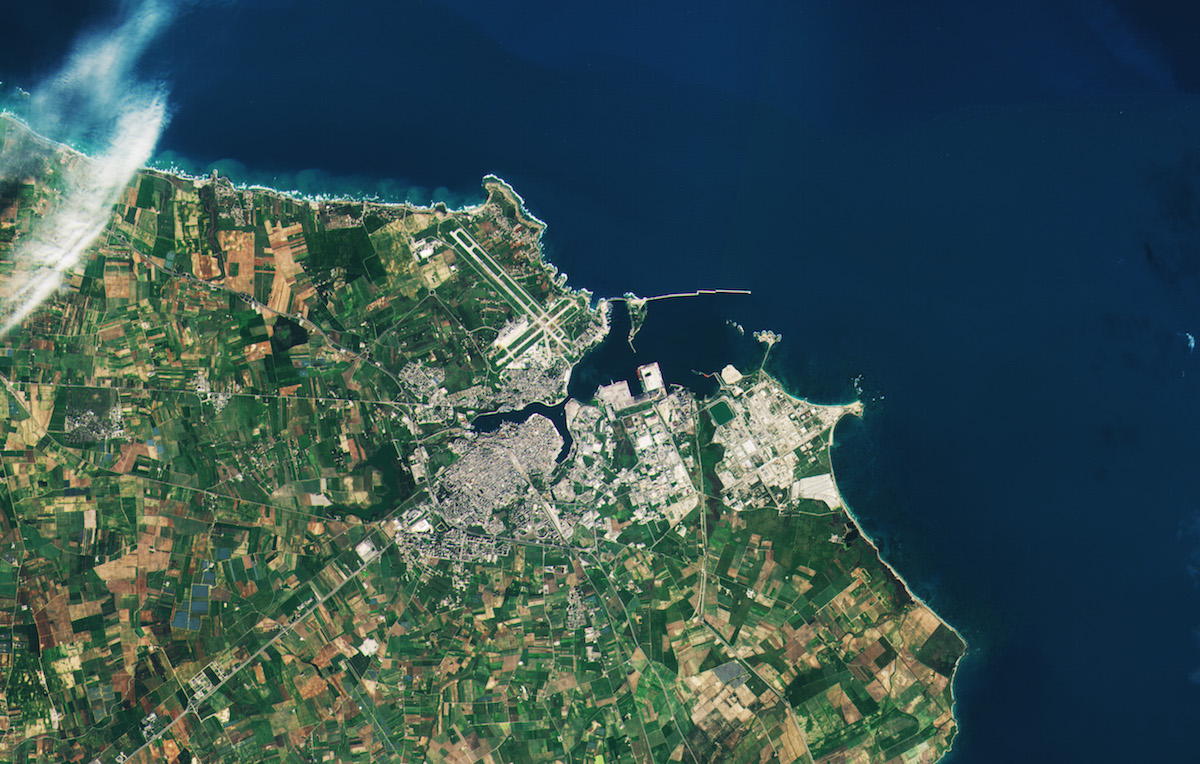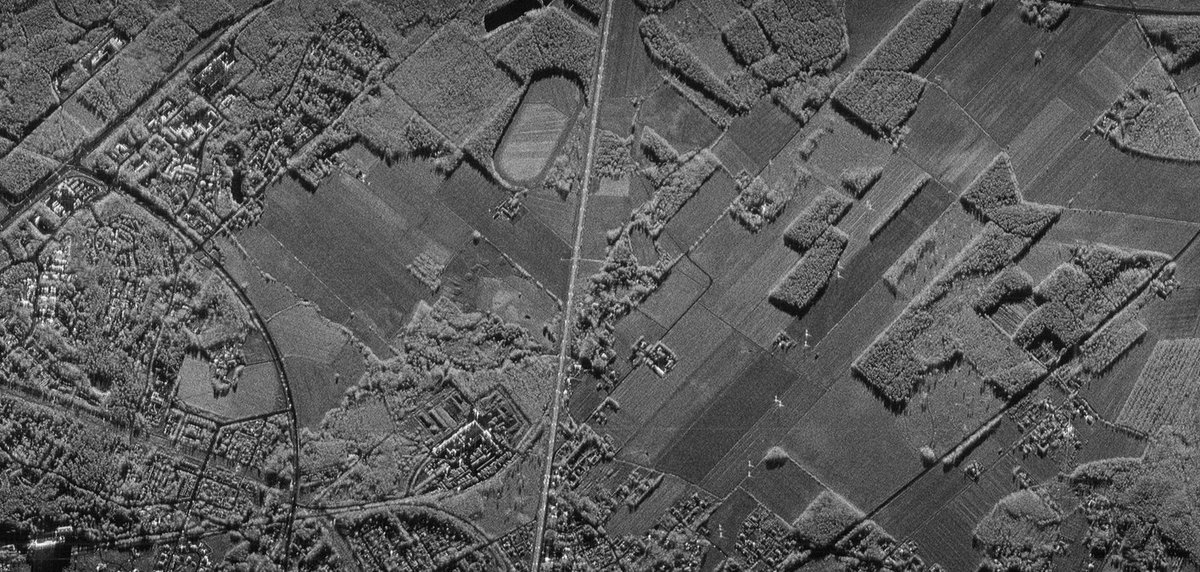Technology
Optics or Radars? What is Better for the Earth Observation Purposes?

Optical (optoelectronic) satellites scan the surface of the Earth in a manner different than the one applicable in case of the radar-based systems. Each of the sensor types has its pros and cons and fields of application, in which it turns out to be especially useful. Can it be said that optical imagery is advantageous when placed against the radar data, or are the images gathered through optics worse?Optical (optoelectronic) satellites scan the surface of the Earth in a manner different than the one applicable in case of the radar-based systems. Each of the sensor types has its pros and cons and fields of application, in which it turns out to be especially useful. Can it be said that optical imagery is advantageous when placed against the radar data, or are the images gathered through optics worse?
Optoelectronic satellites can be considered to be passive. They examine the surface of the Earth across a varied spectrum of electromagnetic radiation frequency, especially at wavelengths typical for visible light or for infra-red. The satellites in question make use of the fact that some of the sunlight, that is not absorbed on the surface of the Earth, is reflected back into space. The number of spectral channels and bandwidth that may be recorded by an optical instrument tells us a lot about its spectral resolution. The higher the spectral resolution is, the more accurate knowledge we may get, with regards to the Earth’s environment observed from the outer space.
Meanwhile, it may be said that satellites that use radars can be considered to be active. They emit microwaves towards the Earth, in order to record the way they are reflected back at the receiver orbiting around the planet.
SAR (Synthetic Aperture Radar) sensors offer especially expansive capabilities, when it comes to this type of observation. This type of a radar may be used to create imagery of objects that remain on the surface of the Earth, with a high level of detail. SAR sensors theoretically enlarge the antenna size through transmission and reception of signals via an antenna placed on a mobile platform (satellite, aircraft, drone). The signals recorded are then processed, so that the data looks as if it was gathered by a single, yet large antenna array. As a result of the above, it is possible to gather high resolution radar imagery.
On-satellite SAR sensors scan the surface of the Earth with the use of microwave impulses. The radar echo is then received by the satellite antenna and recorded. The distance between the satellite and the reflection points on Earth is then measured and processed, so that imagery is obtained, comprehensible for humans and for AI.
It is important that, in order to obtain SAR imagery of good quality, very thorough knowledge of the movement track of the object carrying the sensor is required. Accurate data on trajectory of the satellite is required to properly interpret the data gathered by a satellite.
What’s better?
Here, a simple question comes to mind: what is better - optical or radar satellites? Which of the technologies above allows us to cover a wider spectrum of applications? This is an important question for a country such as Poland which is still in its infancy, when it comes to creating own satellite imagery. Warsaw, due to the budgetary constraints, may need to decide whether to focus on creating optical or SAR observation capacity first.
However, can it indeed be said, as to which out of those two approaches towards satellite EO is better? Or should they not be placed at the opposite ends of the inventory? Maybe one should wonder how radar and optoelectronics could work together? What benefits could be created by synergy as such?
Optics
Optical imagery could be more accessible, especially for persons or entities that have no experience in interpreting or processing of satellite imagery. This happens so as, among the spectrum ranges covered by the optoelectronics, visible light can be found as well. Hence, images as such, at least to some extent, are reminiscent of what a human eye can see. And thus they may be easier to digest and interpret.

High-resolution satellite imagery may be infinitely useful, for instance for the military intelligence purposes. Images as such allows the analyst to acquire knowledge on what type of vehicles, aircraft or vessels is used by the enemy. From the Polish point of view, the technology as such may be used to get knowledge on the Russian Armed Forces’ activity in the Kaliningrad region.
The optics often allow the satellite to gather very detailed imagery. It was in November 2018 when Airbus’s Pleiades satellites managed to find a trimaran drifting on the waters of the Atlantic Ocean. To do so, the satellites have delivered images with resolution of 0.5 meters per pixel.
One should remember though that high-resolution optical EO satellites are usually large and very expensive. Furthermore, they may only capture images of good quality if the weather and the Sun permit.
SAR
The primary advantage the radar sensors have, within the scope of carrying out observation, is the fact that the process may be carried out in a continuous manner. As opposed to the optical instruments, Synthetic Aperture Radar may carry out remote sensing activities regardless of the weather or lighting conditions.
In other words, SAR satellites may be used at night or with a thick cloud cover over the area of interest. The continuous nature of the observation provided by the ability to carry out this effort, regardless of the circumstances listed above, is of key importance, during each and every subsequent visit the satellite makes over the given area. Due to the reason above, SAR satellites are perfectly suited for monitoring change. Here one may refer to landslides or growth of water level in the flooded area. One may also estimate how many more cars appeared at a car park overnight, or how many containers disappeared from the given harbour. Satellite tools as such may also be successfully used to monitor the status of linear infrastructure, such as gas or oil pipelines.
SAR offers an ability to monitor vast areas over short periods of time. This is another of its major advantages. For instance, gathering imagery of an area which has dimensions of 100x50 kilometers takes around 30 seconds. Capturing optical imagery of such small piece of the Earth, with a proper resolution, may take up a few days.
SAR radar is well suited to monitor marine traffic too. This is because ships or warships can be easily picked up on the water, on the imagery as such.
In pursuit of resolution
In case of the optronic satellites, the ones that make it possible to obtain images with resolution below 1 meter per pixel are valued the most. Certainly, in favourable conditions, the instruments as such make it possible to obtain accurate imagery. Here we are speaking of spatial resolution of course.
So called temporal resolution is very relevant, when it comes to gathering satellite intelligence. This parameter tells us about the time intervals at which the satellite is able to deliver usable imagery depicting the given location to the user. In case of sub-meter resolution optical satellites, this interval between the successful revisits may be quite significant. This stems from two reasons. First, constellations consisting of satellites that are so precise and so expensive usually include a minor quantity of such platforms. Secondly, weather or lighting conditions may also have a negative impact on collection of imagery in the quality desired.
On the basis of the experience with the optical satellites, resolution at the level below 1 meter per pixel is considered to be desirable. 25 cm per pixel may be considered to be a satisfactory value for instance. Also, in case of the radar imagery, the 1m/pixel resolution offers a lot of capabilities and makes it possible to notice the details of the object observed.
However, in case of most applications, 3 meters resolution (1 pixel equivalent to a 3x3 m square on the Earth surface) is sufficient. Where a greater accuracy is not required, this is a sufficient and cost effective solution.
Tools as such, offering a good cost-quality ratio, constitute the primary solution offered by the ICEYE company. 3x3 radar imagery provided by that company may be used for numerous purposes. The data as such may be used, for instance, to detect illegal fishing activities. In agriculture imagery as such could be utilized to classify the vegetation types, growing over the individual fragments of the given area. ICEYE is also developing a tool that will allow for automatic detection of worrying changes in the pipeline structures, and then for analysis and classifying such anomalies on the basis of machine-learning algorithms.

One should also note that SAR satellites belonging to the ICEYE company may be operated across a variety of modes, meaning that the spatial resolution may be selected to meet the given requirement or match the purpose. Where a more thorough examination of the given place is required, the satellites are able to capture 1 meter resolution imagery (1 pixel = 1 sq. meter). Thanks to the above, the user, viewing a large area, may use both detailed, as well as a wide view of the given location.

ICEYE also sets a high standard for itself, when it comes to temporal resolution. Until the end of 2019 the SAR satellites belonging to that company will be capable to revisit any place on Earth in an interval of up to 8 hours. Following the next 12 months, before 2020 comes to an end, that interval is to be diminished to 3 hours.
Highly Effective Cooperation
Radar satellites are well suited to regularly scan vast areas and to detect the potential changes that may be taking place there. Optical satellite, meanwhile, makes it possible to examine the given area of interest in detail.
Thus SAR sensors may scan vast areas, looking for points of interest that could be examined in detail, with the use of optoelectronics. The optical sensor would make it possible then to identify the given object (non-authorized construction site for instance) previously detected by the radar satellite. This type of cooperation may be compared to looking at the night sky with the use of binoculars and a telescope. The binoculars usually offer smaller magnification and a wider angle of view than the telescope. The observer using binoculars who manages to find the nebula that he is interested in may then use the telescope to examine it in detail. Contrary to binoculars, the telescope offers a greater magnification, however the visible fragment of the sky is much smaller.
A Perfect Symbiosis
OptiSAR constellation created by the Canadian Urthecast company is a good example of cooperation between the optical and SAR satellites. The project assumes that eight pairs of satellites would be placed on two orbital planes, and each pair will consist of a SAR satellite that is going to be followed by EO optronic satellite, following the same orbital path a few minutes later.
As a result of the above, it is going to be possible to acquire both radar, as well as optical imagery of the Earth at the same time. This will make it possible to access a much greater quantity of information, than in case when a single sensor type is used.
Furthermore, obtaining data from a radar satellite that is going to, as the first one, pass over the given area, makes it possible to notice new, potentially relevant targets that may then become a point of focus for the optical sensors of the next satellite. A proper cooperation between the satellites of each pair will also create circumstances in which the optical satellite would not gather useless imagery, due to the weather conditions.
Summary
In the light of the above it seems that placing radar and optical imagery on two sides of the table is not an approach that is accurate. Each of those tools has some unique and useful features that are usable in given conditions, and less usable if those conditions change.
EO and optical satellites are perfect for gathering intelligence. On the basis of data provided by such systems it is possible to identify and count the number of combat vehicles or warships the enemy deployed in the given area. Acquiring imagery in a spectrum broader than just in visible light, for instance, with the use of IR sensors, makes it possible to attain complex information regarding the given object.
However, one should note and remember that acquisition of data with the use of optical sensors is highly dependent on the external circumstances. And these include lighting conditions and weather.
Radar imagery may not offer clarity on par with that of optical images, however, it is perfect for complex scanning of vasts area and for detecting changes taking place there. Thanks to the above, SAR sensors may indicate the points of interest for a more thorough examination by EO satellites, or by SAR satellites that feature a higher resolution radar. However, certainty of observation on each revisit is a huge advantage that the SAR satellites may have. This makes it possible to precisely monitor and detect environmental changes. Thanks to abilities as such, the governments, administration or state services may detect criminal or terrorist activities, military and natural threats (related to movement of the Earth’s crust).
In the past, obtaining of imagery from SAR satellites was related to major costs required to be covered by the parties interested in imagery as such. The infrastructure used for that purpose was difficult and was available on the orbit in very sparse quantities.
Now, considering the Space 4.0 trends, the situation has begun to change. SAR Satellites manufactured by ICEYE are fairly inexpensive and their dimensions are not that large. The satellites in question will form a constellation of global coverage, providing frequent revisits. The elements of that constellation could be regularly and cost-effectively replaced, as the lifetime of the individual satellites come to an end. Solution offering a high degree of flexibility and certain results at a relatively low cost, may turn out to be useful in sectors of economy such as energy industry, insurance or maritime transport.
Article written in collaboration with ICEYE